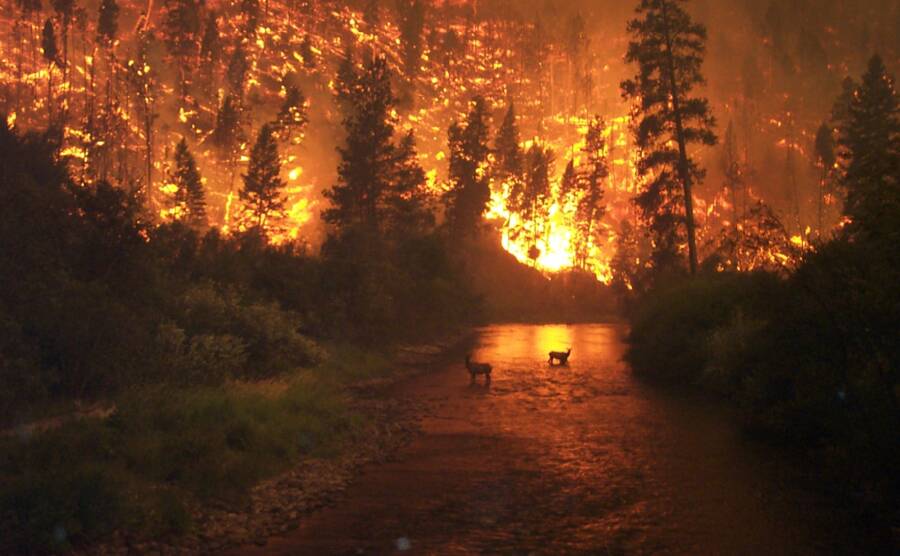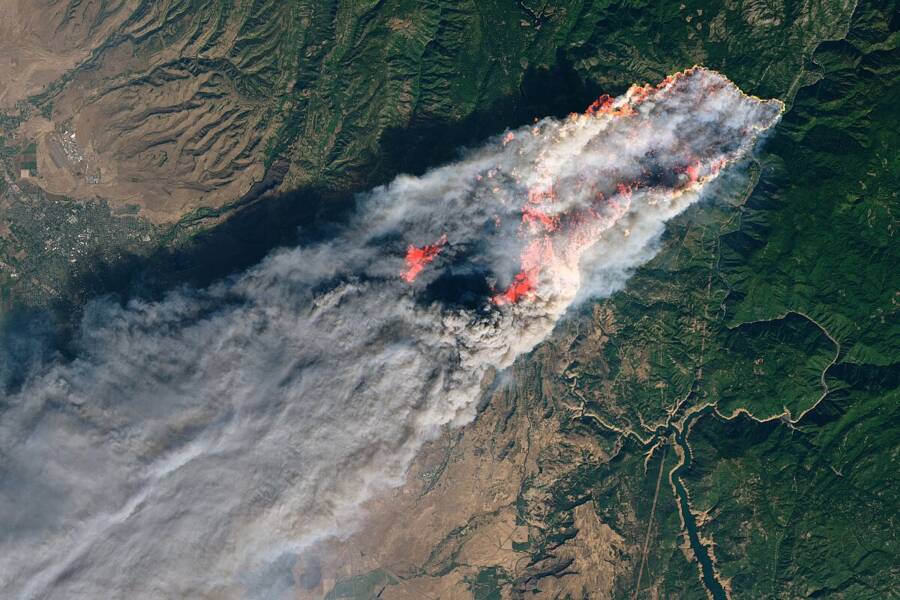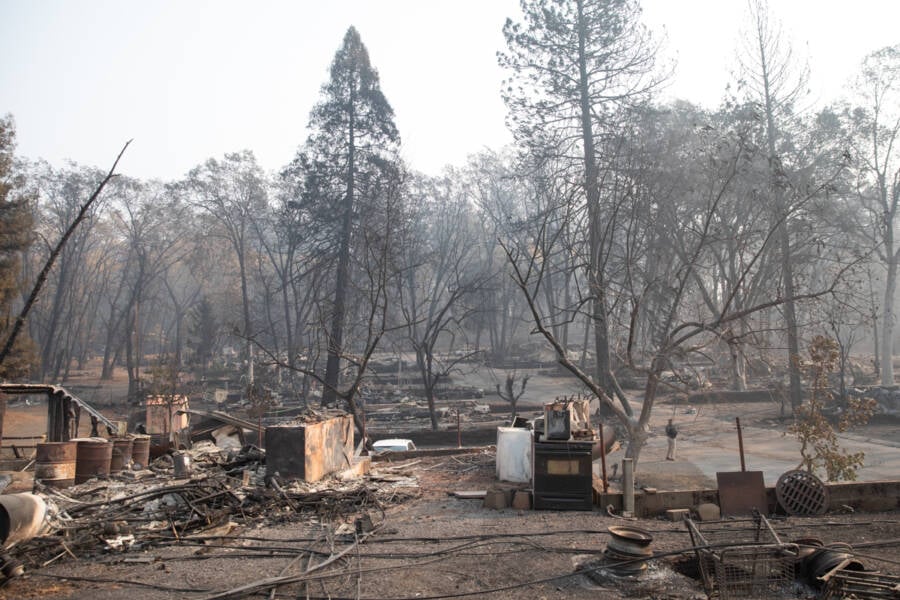The Great Fire of 1910 burned three million acres across Idaho, Montana, Washington, and British Columbia in a single day, but it was far from the deadliest wildfire in American history.
Wildfires have blazed through forests and plains around the world since the beginning of time. In many ways, they help the ecosystem, as they destroy dead plants and other organic matter so that new vegetation can thrive. However, in populated areas, they pose great danger. The Great Fire of 1910, the largest wildfire in American history, sparked debate on how to balance these natural benefits with the risk to humans.

U.S. Department of AgricultureA wildfire burns through the Bitterroot National Forest in Montana in August 2000.
While the 1910 wildfire took place in a rural area of the American West, others have raged through large towns and even major cities, displacing — and even killing — thousands of people. The deadliest wildfire in history, Wisconsin’s Peshtigo Fire of 1871, may have taken up to 2,500 lives.
Because of climate change, extreme wildfires have become more common in the 21st century, and it seems that they will continue to devastate communities across the country.
For a peek at what this terrifying future may look like, take a look back at seven of the largest and deadliest wildfires in U.S. history.
The Camp Fire Of 2018 Devastated Butte County, California

Public DomainThe Camp Fire of November 2018 killed at least 85 people and left tens of thousands of others without homes.
On the morning of Nov. 8, 2018, the most destructive wildfire in California’s history broke out. It burned over 150,000 acres and forced at least 52,000 people to evacuate.
There was a high wind advisory in the town of Paradise that morning. By 7:30 a.m., the sky was orange. There was almost no time left to leave.
An investigation later revealed that a single broken metal hook on a transmission tower owned by Pacific Gas & Electric Company (PG&E) had sparked the fire. When the hook failed around 6:15 a.m., the energized power line it was holding up dropped onto the tower, creating an electric arc that melted part of the metal. This hot, molten material then fell onto the dry brush below, igniting the deadly blaze.
The flames were spotted within five minutes, but it was already too late.
The fire quickly spread through the small community of Concow, and by 7:44 a.m., it had reached Paradise. Evacuations were ordered 15 minutes later, and residents rushed to escape. However, Paradise is in a rural and mountainous area, with just a few main roads leading in and out of town. Traffic quickly came to a standstill.
One survivor, Paul Weingartner, later wrote for Northwest Public Broadcasting News, “I began to realize that I might not make it out, that I would be burned in my car or, my worst fear, suffocated. I had no cell service in the ravine, and I couldn’t call my family to say goodbye.”
“As these thoughts were coming into my head, and I was trying to resign myself to a stupid death,” Weingartner continued, “the side door burst open and a guy jumped into the passenger seat… He quickly explained that his car, several vehicles ahead of mine, had stalled and caught fire and he had to abandon it.”
Weingartner and his passenger eventually made it out, but many others did not.

Public DomainThe Camp Fire burned over 150,000 acres and destroyed at least 12,000 buildings.
After destroying Paradise, Magalia, and Butte Creek Canyon, the fire continued to burn for another two weeks. Firefighters from across the state were sent to the region to help fight it, but it proved difficult to control.
Tragically, 85 people lost their lives, making it California’s deadliest wildfire to date.





